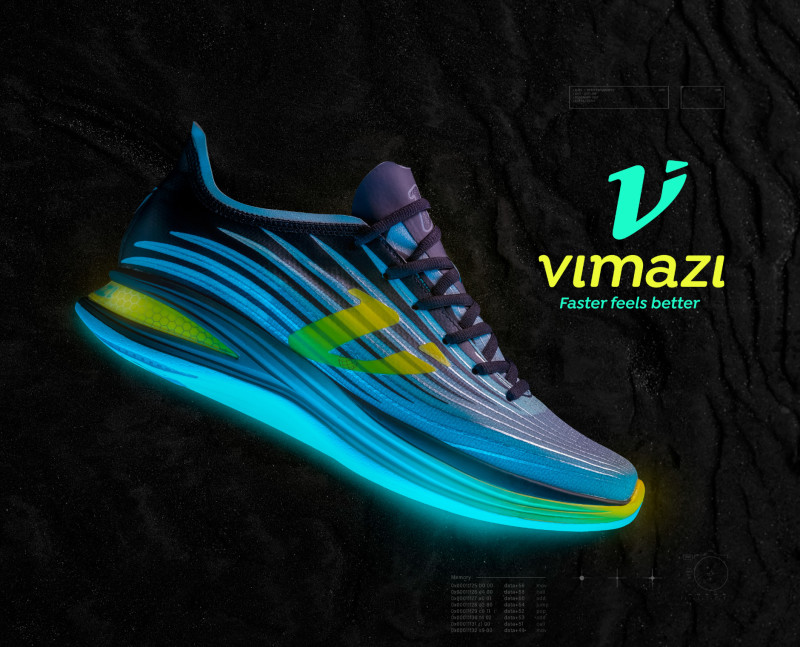Promising a new way to make and sell running shoes, the Vimazi shoe brand founded by industry veteran Scott Tucker will debut in August with a strong technical story centered around utilizing pace zones to deliver energy efficient propulsion and impact cushioning for each runner depending on their running pace.
According to Tucker, Vimazi is all about how making and selling shoes by pace zone solves the most important performance problems for runners, as well as the problem of finding the best shoe in a crowded market.
“Nobody has ever approached run footwear this way, but the time is ripe and the solution is elegant,” Tucker tells Running Insight. He explains that runners need cushioning and propulsion with every step they take, but currently they must choose between shoes that are energy efficient in propulsion (such as racing flats) and shoes that provide adequate impact cushioning.
Most shoes are not made to be energy efficient in propulsion, he points out. Vimazi – which is based in Portland, OR, and whose name comes from Greek for “pace” and “zone” – claims to solve this problem by applying physics and biomechanics research to create a line of shoes made and sold by pace zone. Pace-tuned FastPods in the midsole are tuned to the different forces in the rearfoot than forefoot and primarily determined according to a runner’s pace.
Weight is also worked into the equation and accounts for a two-minute wide zone for each model. In this way, each model provides an optimal level of impact cushioning and energy efficiency during propulsion.
“Each runner, regardless of their pace, gets the shoe that helps them run their best and achieve their goals,” says Tucker, who points out that a single shoe cannot provide propulsion efficiency and optimal cushioning at every pace. “That’s just physics,” he adds. “Only tuning the shoes by pace zones can do this. Figuring out exactly how to tune them? Ahhh, that’s a fun story.”
Tucker, who has a physics education and a history of studying and researching the science of running biomechanics and has been making running shoes for 26 years – beginning with Montrail trail running shoes in the 1990s and continuing at Columbia, Scott and Pearl Izumi – says he set out with the “geeky” goal of designing a shoe to break the two-hour marathon barrier.
It took two years of research, prototyping and testing before he arrived at a solution he calls alternately brilliant, yet simple: Use the lightest weight foam formulations in specific combinations and densities to dial in the performance properties at each pace zone. There is no carbon fiber or other high-tech materials — just specific dimensions and physical properties.
The shoe selection process for a runner is simple: All he or she needs to know is what pace they run. The selection process is the same — identify pace, get shoe.
The pace zone concept also allows Vimazi to build in other properties needed in a running shoe. That’s why the Z70, built for a 10–13 minute pace, has a wider platform and additional rearfoot stability as compared to the Z30 (5–7 minute pace), which is narrower and uses less reinforcement to save weight. Support, traction, and durability follow in similar fashion.
Vimazi plans to offer “a quiver of shoes,” to allow runners to cover the range of paces in their weekly rotation. The shoes will have an MSRP of $160.
The shoe rollout to retailers begins in August with the most popular pace zones (Z40 and Z60) the first to hit the market. Tucker says that as awareness and popularity build Vimazi will bring out new models until the full assortment, including a pace-tuned walking shoe, is available in six-to-eight months.
Scott Tucker can be reached at [email protected]






